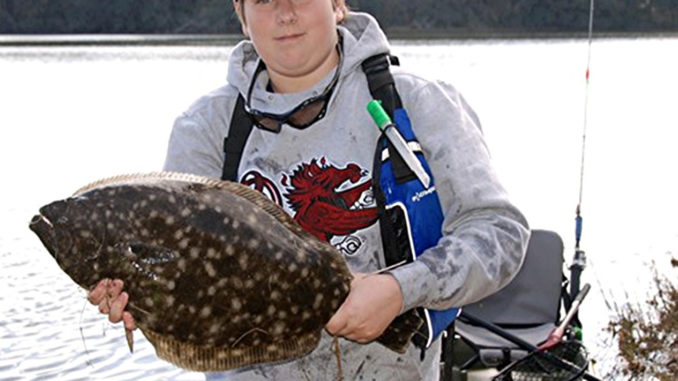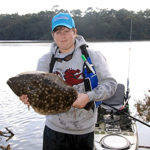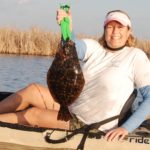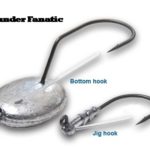
Don’t forget the doormat on your next paddle
Though the association is rarely made, it would seem that fishing boats capable of maneuvering in just inches of water would go hand in hand with fish that can be completely submerged in just inches of water.
Obviously we’re talking about kayaks and flounder.
In reality, most anglers treat flounder the same way, regardless of the watercraft they pilot. Most flounder are caught incidentally while fishing for redfish or trout. They are not an unwelcome species; on the contrary, most anglers relish flounder for their fight on the rod and excellent qualities on the table. Considering the whole inshore community, only a handful of anglers specifically target flounder, and only a percentage of those do so from a paddleboat.
The most reliable signs of spring along the coast are when inshore waters warm into the lower 60s and various baitfish make their way back inland. Along the same time, flounder begin to make their way from offshore wintering grounds back into the estuaries and creeks.
Justin Carter of Charleston’s KayakSC is one of few paddlers who admits to targeting flounder, and in fact, he has two strategies for finding them.
“I sight-fish for flounder from my kayak,” said Carter (843-725-8784), “not necessarily by seeing the fish, but seeing the signs that flounder are in the area. A flounder is the only fish that can ambush bait in only six inches of water, and you never see the fish. That’s one indicator, a splash right next to the bank with no back out of the water, like a redfish. The other indicators are birds. If I’m paddling along a quiet bank in really skinny water and there are several birds staring down at the water, that’s probably going to mean a flounder’s working that bank.”
Dolphin Dave Hamilton of Time Out Sport and Ski in Mount Pleasant quipped that he has the most success catching flounder during redfish tournaments. He did share one of his secrets for intentionally finding flounder.
“Look for pipes,” said Hamilton. “A culvert that’s moving water from one side of a road to another — you’ll see lots of those when you’re running out to the barrier islands. Another place is anywhere you have some type of impoundment like a pond or lagoon. Fish the side where the water’s moving. The rushing water on either side of the pipe creates deeper holes, and flounder love to hang out in those holes when the water is dumping into them.
“Those locations are also prime for kayak fishing because they’re usually way back in a creek somewhere, hard to reach by motor boat, and you can get downstream where most bank anglers can’t reach.”
Veteran kayaker Scot Townsend and his son Zach target flounder from Beaufort to Murrell’s Inlet. They prefer sandy areas that offer ambush points where flounder can lie downcurrent.
“The junction of two creeks is ideal, especially if there’s a sandy bottom and some oyster rake or other structure where flounder can hide,” Scott Townsend said. “We’ll stake out our boats downcurrent from the intersection and cast upcurrent, working the bait along the bottom back to the boat.”
Carter’s favorite flounder bait is a pearl/chartreuse tail Z-Man StreakZ, while Townsend likes the same color scheme in a paddletail fished on a chartreuse jighead. Hamilton said one of his best baits for fishing pipes is a large, live mud minnow or finger mullet fished on a Carolina rig. His favorite artificial bait is a Redfish Magic spinnerbait with a silver blade fished slowly off the bottom.
Numerous soft plastics on the market extoll their appeal to one or more species of fish, but few if any developments in the basic hook set-up that is used to get the angler’s point across to the fish.
Until now.
Betts’ Flounder Fanatic jighead is developed specifically for flounder. The hook is positioned sideways as opposed to vertically, the theory being that since the flounder’s mouth is actually sideways, the unique hook position of the Flounder Fanatic will allow the flounder to more easily get the hook in his mouth.
The jig has a built-in weed guard and comes with a small rubber baitkeeper. It comes in a variety of weights in increments from 1/8-ounce on the regular jighead all the way to 1 ½ ounces on the bottom jig.







Be the first to comment